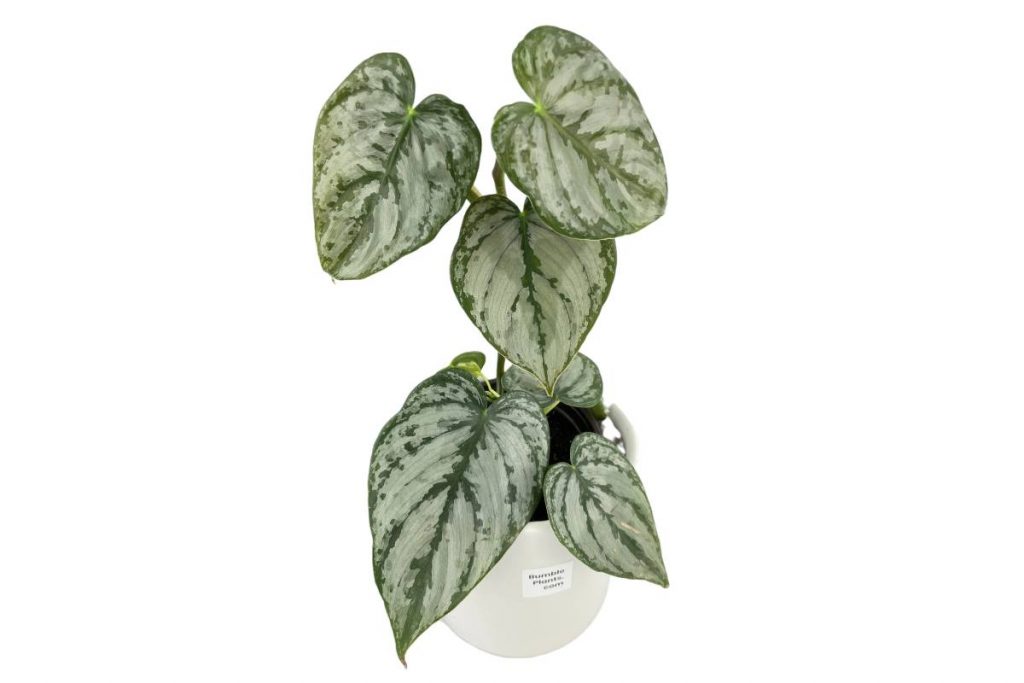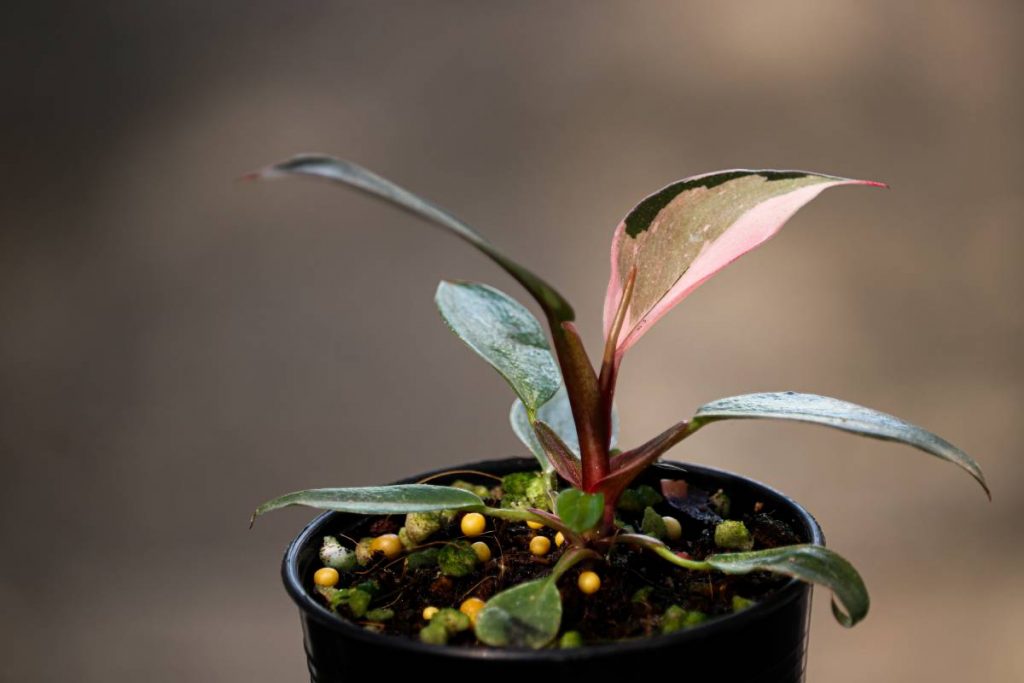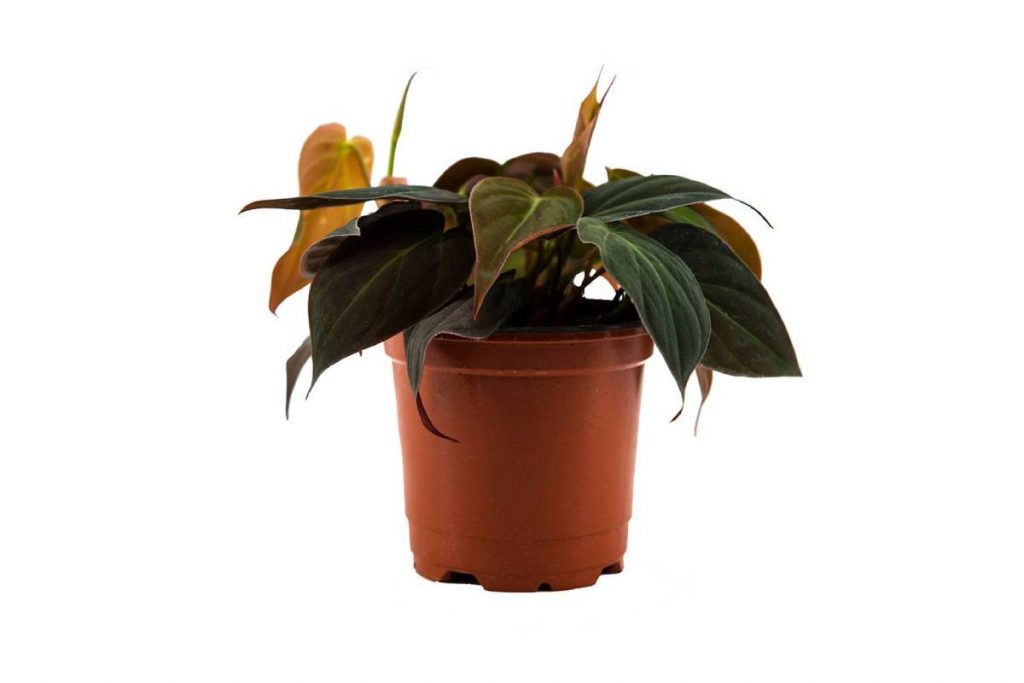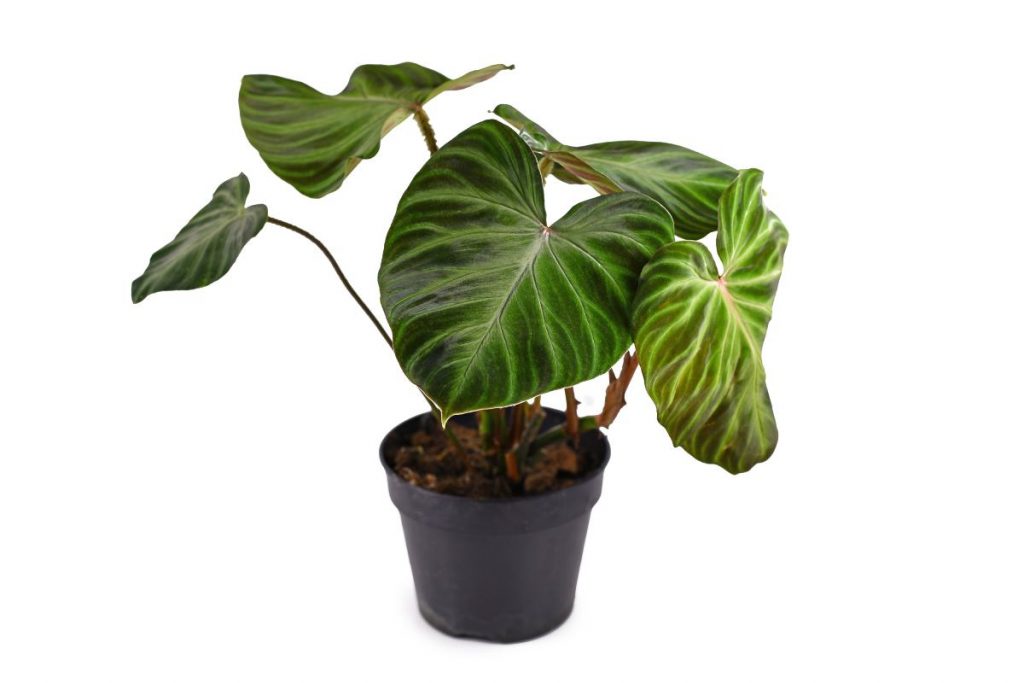Philodendrons are tropical and easy to care for, and they are perfect for indoor houseplant activities. They are very rare and hard to find. It will be perfect if you want to decorate your house with these beautiful variegated plants. They are not readily available because of their rarity, so you have to find them in a specialized store or website.
However, if someone you know does have these plants in their garden, then it is possible that you can propagate them, and this will cost you only a few bucks. But, of course, you must take proper care of propagation and do it with the proper steps. Or you can also go to a local specialized nursery that sells these rare plants.
What Is Philodendron Brandtianum?
The philodendron brandtianum are beautiful and exotic plants; they are also known as silver leaf philodendrons, have heart-shaped olive green leaves, and are variegated. The foliage of leaves is splashed with silver markings. These plants come from the philodendron genus and belong to the Araceae family. Initially, they are found in tropical rainforests of Brazil, Ecuador, Bolivia, and some parts of Colombia.
These plants have become popular in recent years for house planting activities because they are straightforward to take care of, do not require any special attention, or do not have any special requirements. But still, that doesn’t mean they do not need proper care. You still have to give proper time to them to thrive best.
How to Care For Philodendron Brandtianum?
All philodendrons’ requirements must be equal because they love to survive in a warm climate. Their potting mix must be well-drained, and they need a regular water supply. Let the upper layer of soil dry before watering them again. Indirect sunlight is necessary for survival, and the temperature range should be between 70 to 90 Fahrenheit and 20 to 35 degrees Celsius. Fertilizers once a month and liquid fertilizer would be ideal.
Light Requirement
Like all other philodendrons, it also requires bright but indirect sunlight. Brighter or a higher level of sunlight helps these plants grow better. Overexposure can cause several problems in your plants. If you want to grow your plant outdoors, place it in fewer than 30 to 40 % shade cloth.
You can also place them under big trees because, naturally, they are grown in the tropical rainforest, where direct sunlight reaches them under the big trees. Direct sunlight can damage the foliage, and leaves would start burning. It will be ideal for you to choose an east-facing window for your philodendron brandtianum.
These plants can survive low to high-intensity light as long as it is indirect. If your house is not equipped with windows or you cannot provide them indirect sunlight. Then you might also use artificial light for their survival.
Water Requirement
They are heavy feeders of water, so they need a considerable amount of water for their growth because in the rainforest, their soil remains moist with the help of a lot of water, and you must create a similar environment if you are going to keep your plant indoors. Unlike other philodendrons, they require water thrice a week in their growing season, like summer and late fall.
On the other hand, on winter or cold days, you have to reduce the frequency of watering them thrice a week to once a week. Make sure that the upper layer of soil gets dry before you water them again.
Soil Requirement
It is highly recommended that you must only use a well-drained potting mix while planting these philodendrons. It does not require any particular soil, but a simple potting mix used in house planting activities can do a lot of good to them. In addition, your container or pot in which you are going to plant must have drainage holes in the bottom so that extra water can quickly drain through them.
It Is necessary to keep the soil moist during the growing season, and the power of hydrogen should range between 6 to 7 on a scale. They require a lot of water and that doesn’t mean you should waterlog your soil or make it soggy. Water logging can kill your plant quickly.
Temperature Requirement
The basic temperature requirement for philodendron brandtianum is around 70 to 90 degrees Fahrenheit. You can place your plant outdoors during the summer season and if your regions have cold nights then make sure that you bring your plant indoors at night. Placing them where the air conditioner or heater is running might be dangerous for your plant.
They can survive in cold temperatures but below 15 degrees Celsius they cannot tolerate it anymore. Therefore, the temperature between 70 to 80 Fahrenheit during the day daytime would be ideal. During the nighttime, the minimum temperature should be above 65 degrees Fahrenheit, equal to 15 degrees Celsius.
Humidity Requirement
Philodendron brandtianum loves to thrive above the average humidity. The humidity level in their natural vegetation is high, so they love surviving in humidity between 50% and 60%. Therefore, if you are going to plant your philodendron inside the house, you must provide them with humidity of around 50 to 60%. In addition, their foliage must look beautiful.
If the atmosphere is derived in your area, you might use a Pebble tray or mist the leaves. Misting plants also ensure good aeration to protect the plant from fungal or leaf infection. Moreover, if you don’t have enough time to look after your plant, it would be perfect timing to buy a humidifier. A humidifier is a simple tool or a machine that provides humidity to plants as they require.
They do not make the environment of your house humid. It only targets a specific area of your plant.
Fertilizer Requirement
They are heavy feeders of fertilizers. Although they cannot get any fertilizer in their natural environment, they often grow to add a prolonged growth rate. While in-house planting, Philodendrons can benefit from fertilizers, increasing the growth rate of the plant. Their growth rate with the help of fertilizers. Water-soluble fertilizers might work more effectively than other fertilizers. They do not require any special kind of fertilizers; normal ones can easily thrive them.
It is essential to feed them with fertilizers once a month but only in their growing stages, such as the summer and spring seasons. In winter, it would not be ideal for them to feed with fertilizers. Using good fertilizers makes sure that your plant would not suffer from any problems because cheap quality fertilizers contain salt in high quantities, which tends to damage the root and ultimately it can kill your plant.
Potting and Repotting
These two are essential parts for house planters. Planting philodendron is not hard, but they are very easy to plant. However, at their first planting, they need a smaller pot for better development of their roots. Moreover, they often require repotting every two or three years. Below are a few steps by which you can pot or repot your plant easily.
Potting
- To start this process, you must collect a few items by which you can pot your plant easily.
- Use a small pot for the first-time plantation of your philodendron.
- Ensure that the pot you use has drainage holes at the bottom so that excess water can quickly drain through them.
- Take the pot and start filling it until it gets half
- After that, take the plant softly and try to place them safely because the stem of these plants are very sensitive
- After placing the plant in half soil, start filling the port with the rest of the soil
- After completing the whole planting, the process gives them a considerable amount of water so that they can adapt to the environment.
- Try to make your soil as loose as possible because loose soil is less likely to get waterlogged.
Repotting – After two or three years of potting, your plant needs to pot again to let the plant grow entirely and become more mature. The plant’s transplant should only be done in their growing season because in winter these plants stop growing until the summer season comes again. Therefore, it will be ideal for you if you grow them in their growing phase.
Try to bring the pot more prominent than the previous one because this time, your plant is going to grow much bigger than last time. Use the same process that you have done for potting. Try to add fertilizers and manure to your soil for its better development.
Pests and Diseases
Philodendron imperial red can fight infections and pests as they are highly adaptive plants. But sometimes diseases can attack them like the other philodendrons; removing them would be one of the top priorities of their owner.
Pests – Scales are the most common pest which can damage your plant because they can be found in every plant. Scales are similar to the Millie bug and are considered an upgraded version of the Millie bug. They collect all the essential nutrition in the plant or from manure or fertilizers. These pests do not change their location and damage a particular area of the plant.
It is tough to recognize them because they look exactly like brown spots on the stem. However, the scale can decline the overall health of your plant and kill them if left untreated.
Diseases – Bacterial and fungal infections are one of the most common problems faced by philodendron brandtianum. They are highly prone to diseases that can start rotting your plant’s roots. Moreover, they can lead your leaves to turn yellow, which might be a bad sign of an attack of diseases. Therefore, try to get rid of them as soon as possible because, after a few days, they can eradicate your plant.
Solution – You can use alcohol or antiseptics to treat your plant because diseases and pests are prone to alcohol, or you can also wash your plant under a running tap.
Height and Growth Rate
It is a fast-growing plant that can grow around 6 to 8 inches in height and spread around 4 to 7 inches. The growing season for them is in summer or late fall. They grow faster than normal philodendrons, and by providing proper lighting conditions, they can grow to their full potential.
Does Philodendron Brandtianum Grow Flowers?
Basically, most philodendron plants do not have flowers, while some of them produce flowers when grown in their natural condition. However, this plant does not produce flowers, but the leaves of this plant are unique, and they do not need flowers to show their beauty. Their leaves make them even more beautiful than most the flower in this world.
How to Propagate Philodendron Brandtianum?
It is effortless to propagate this philodendron brandtianum, which is why they are also famous. Two of the most common methods of propagation are air layering and stem cutting. It would be best if you only took propagation cutting in the growing season.
- Take a container or a jar, fill it with tap water, and let the water settle down so that chlorine can evaporate.
- Now take 5 inches long stem from a healthy mother plant and use scissors or a sharp knife or gardening clips to make a cut below the node of the plant.
- After that, cut three or four sets of leaves and leave two nodes of leaves on the stem bar.
- Now place the leaf in water. It is essential that upper leave remains upon or above the container while leafless and must remain in the water in order to propagate.
- For the fastest growth of your propagation, you must place them in a sunny location where most of the indirect light comes into your house. You can also provide them with temperatures around 65 to 73 Fahrenheit during the daytime and 50 to 55 during night time.
- Try to replace the water as soon as possible in around two or three days
- Your stem will grow around in two or three weeks.
Is Philodendron Brandtianum Poisonous?
Philodendron brandtianum contains a small number of toxins inside them, which can be dangerous for human beings and animals. So you must take care of your pet or children and keep your plant out of their reach. The toxins inside these plants activate while consuming the leaves or stems of these plants. Eating then might cause many possible side effects such as irritation, difficulty swallowing, burning sensation, vomiting, and drooling. Apart from this, it is mandatory to use a glove while. You are checking or taking care of your plants.
What Is the Worth of the Philodendron Brandtianum Plant?
These rare plants are tough to find, so they might be a little expensive, and they can cost around $500 U.S. Dollars to $1500 U.S. dollars. However, with these beautiful-looking plants, you can expand the beauty of your house, so the price is nothing to pay in front of their beauty. However, if you have neighborhoods that do house planting, you might also ask them for propagation for your plant because it can go to very little and be available quickly.
Comparison With Some Similar Plants
Philodendron Brandtianum vs. Sodiroi
These two plants look very similar to each other, but after getting mature, one becomes come larger, and one stays small. Brandtianum stays small but produces many more stems and smaller leaves than sodiroi. On the other hand, sodiroi is a larger plant with larger leaves, but they do not produce a lot of stems.
Philodendron Brandtianum vs. Scindapsus
They almost look identical to each other, but the differences between their lives are significant. Scindapsus Have thicker leaves, and their silver is a bit raised. At the same time, brandtianum has thin leaves, which are larger and have heart-shaped leaves.
Common Problems
It is very rare that these plants suffer from common problems because they are highly adaptive and they are capable of taking care of themselves. However, they are still plants, so they can be affected by some common problems. Some of them are mentioned below.
- Brown leaves
- Leaves falling
- Curling of leaves
- Leaves turning yellow
These are the most common problems which your plant can face because of your less caretaking routine. These fundamental problems can happen because of Excess water, less water, water logging, lousy lighting condition, and many more. The immediate solution to solve them is to take care of them properly with the proper requirement.
Final Words
The philodendron brandtianum will be a fantastic choice if you love to collect rare plants. The colors of the leaves are so elegant that they can attract anyone toward it. Aside from this, they are easy to take care of and are evergreen plants. They can survive in every season by just following the above guide properly. However, they are a little bit expensive because of their rarity.



